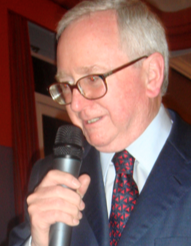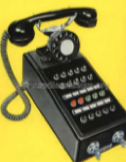People
Steve Somerville remembers a malevolent machine
Tuesday 13 April 2010
 Reuters always had a reputation for using the latest technology. “Follow the cable!” was the founder's watchword. He had used carrier pigeons as his first small-scale communications system in the mid-19th century, but quickly upgraded to the new telegraph network to launch his global news agency. Successive generations exploited the most effective messaging systems available – every invention from radio telegraphy to space satellites, from morse code to telex. By the 1960s, computers were about to take over the world and Reuters was one of the most active pioneers.
Reuters always had a reputation for using the latest technology. “Follow the cable!” was the founder's watchword. He had used carrier pigeons as his first small-scale communications system in the mid-19th century, but quickly upgraded to the new telegraph network to launch his global news agency. Successive generations exploited the most effective messaging systems available – every invention from radio telegraphy to space satellites, from morse code to telex. By the 1960s, computers were about to take over the world and Reuters was one of the most active pioneers.
There was one anomaly in all this super-efficient technology: the Ipsophone, invented by a Swiss armaments company and installed in the Geneva office.
Steve Somerville (photo), was prompted to recall some disturbing memories by a conversation he had with Lionel Walsh at the latter's recent 80th birthday party. Walsh was bureau chief in Geneva in the 1960s. Somerville was a junior correspondent. The Ipsophone was a menace, they recalled - an infernal machine that required eccentric behaviour and caused embarrassment for the user.
"When I first encountered it there in the early 1960s, I was impressed," Somerville remembers. "I thought it was a cutting edge system, a brilliant new Swiss invention. I began to have my doubts as it became increasingly erratic and disruptive. Later I discovered that it had actually been developed during the Second World War, so the technology was already about 20 years old, soon to be swept away by transistors and computer chips. That would explain a great deal. The Ipsophone evidently felt stressed and under threat.
“It had been a longstanding member of the Reuters Geneva family, but now it was approaching the end of its life. It was like one of those grumpy old relatives, sitting in a corner complaining about all the changes in the world, forever embarrassing the family by misbehaving at the worst possible moment.”
 Physically, the Ipsophone consisted of two components: a chunky telephone handset, with a dial and an array of coloured buttons (photo), and a big ugly metal box. The sealed box looked like a large safe. And all this for what was really only a telephone answering machine.
Physically, the Ipsophone consisted of two components: a chunky telephone handset, with a dial and an array of coloured buttons (photo), and a big ugly metal box. The sealed box looked like a large safe. And all this for what was really only a telephone answering machine.
“It took up a lot of space in Reuters’ small attic office in Geneva’s Old Town. It was an electro-mechanical device, judging by the strange whirring and clicking noises that came from deep inside. It sounded as though it was full of cogwheels and pistons. In fact, I found out recently, it was packed with valves and magnetic wire reels. Even when it worked properly it was an odd system. When it went mad, as happened increasingly often, it was an evil spirit.
"I began to dream about the Ipsophone. I dreaded telephoning from the Old Town office, in case it cut in on a conversation, or recorded me unawares. I was only saved from the curse of the Ipsophone by a sudden, unexpected order from Reuters headquarters: a new posting, move immediately to West Africa. I was sorry to be leaving Geneva for many reasons, but I was happy to take up a new challenge. And to escape from the clutches of the malevolent machine."
Steve Somerville's full account of his sometimes embarrassing encounters with Ipsophone. ■
- « Previous
- Next »
- 528 of 574